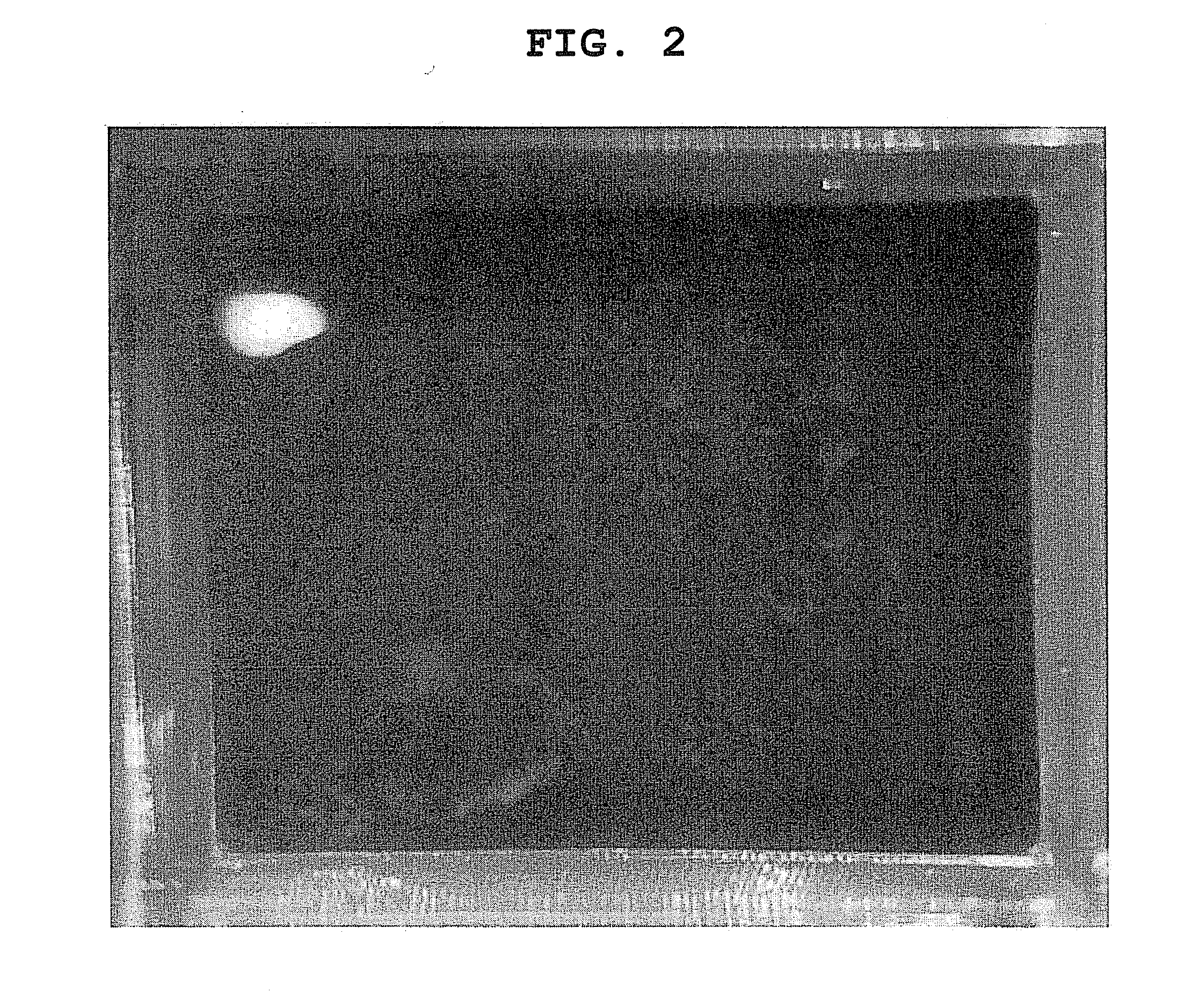Method for producing cell sheet
a cell sheet and cell technology, applied in the field of cell sheet production, can solve the problems of preventing the exertion of sufficient function, failing to show the effectiveness of the above-mentioned means, and affecting the survival rate, so as to improve the survival rate, and facilitate the transplantation operation.
- Summary
- Abstract
- Description
- Claims
- Application Information
AI Technical Summary
Benefits of technology
Problems solved by technology
Method used
Image
Examples
example 1
Formation of Human Retinal Pigment Epithelial Sheet
[0055]Retinal pigment epithelial cells collected from an eye were cultured, treated with 0.1% trypsin and 0.02% EDTA for 5 min, and collected by pipetting. The collected RPE cells were centrifuged, the number thereof was counted, and the cells were seeded by 1,000,000 cells and 2,000,000 cells on 4 well Chamber Slide (Lab-Tek) (5,000 cells / mm2, 10,000 cells / mm2, respectively), according to the above-mentioned results of consideration. As a result, a sheet was formed, but shrank to ¼ and ½ of the well area, respectively (FIG. 1). Assuming the number of cells without shrinkage was 2,000,000 cells / cm2, the cells were freshly seeded on 4 well Chamber Slide. As a result, shrinkage of the cell sheet was not observed (FIG. 2).
[0056]In addition, the cell sheet was immunostained. For immunostaining, the sheet was fixed with 4% paraformaldehyde and whole mount was performed, or a cryo or paraffin section was prepared, and stained by an enzyme...
example 2
Formation of Human iPS Cell-Derived Human Retinal Pigment Epithelial Sheet
[0059]In the same manner as in Example 1 except that iPS cell-derived RPE cells were used as the human retinal pigment epithelial cells, a human retinal pigment epithelial sheet was formed. As the iPS cell-derived RPE cells, RPE cells obtained by differentiation induction of human iPS cells, which were obtained by the method described in Neuroscience Letters 458 (2009) 126-131, according to the method described in WO01 / 088100, were used.
example 3
Western Blotting of Human Retinal Pigment Epithelial Sheet-Derived Protein
[0060]An extract of the human retinal pigment epithelial sheet produced in Example 1 was lysed with a lysis buffer containing a protease inhibitor. The equal amounts of the obtained protein was separated by SDS-PAGE (10%), transferred onto a polyvinylidene difluoride membrane (Immobilon-P; Millipore, Billerica, Mass.), and blocked with 10% skim milk dissolved in TBS-T for 1 hr. Then, the membrane was incubated overnight at 4° C. with a primary antibody obtained by dissolving each of a mouse monoclonal anti-RPE-65 antibody (1:5000), a rabbit polyclonal anti-occludin antibody (1:250), a mouse monoclonal anti-cytokeratin 18 antibody (1:1000), a rabbit polyclonal anti-ZO-1 antibody (1:50), a mouse monoclonal anti-type 4 collagen antibody (1:1000), and a mouse monoclonal anti-elastin antibody (1:1000) in 1% skim milk-containing TBS-T. After washing 6 times with TBS-T, the membrane was incubated with a secondary ant...
PUM
| Property | Measurement | Unit |
|---|---|---|
| diameter | aaaaa | aaaaa |
| density | aaaaa | aaaaa |
| cell density | aaaaa | aaaaa |
Abstract
Description
Claims
Application Information
 Login to View More
Login to View More - R&D
- Intellectual Property
- Life Sciences
- Materials
- Tech Scout
- Unparalleled Data Quality
- Higher Quality Content
- 60% Fewer Hallucinations
Browse by: Latest US Patents, China's latest patents, Technical Efficacy Thesaurus, Application Domain, Technology Topic, Popular Technical Reports.
© 2025 PatSnap. All rights reserved.Legal|Privacy policy|Modern Slavery Act Transparency Statement|Sitemap|About US| Contact US: help@patsnap.com



